Table of Contents
Introduction
Jowar, also known as sorghum, is one of India’s most vital cereal crops. As a hardy crop, jowar can be grown even in dry, marginal lands and plays a crucial role in providing food security, especially in arid regions.
In this blog, we’ll take you through seven simple steps to successfully grow jowar.

Step 1: Climate, Soil, and Season for Sowing Jowar Seeds
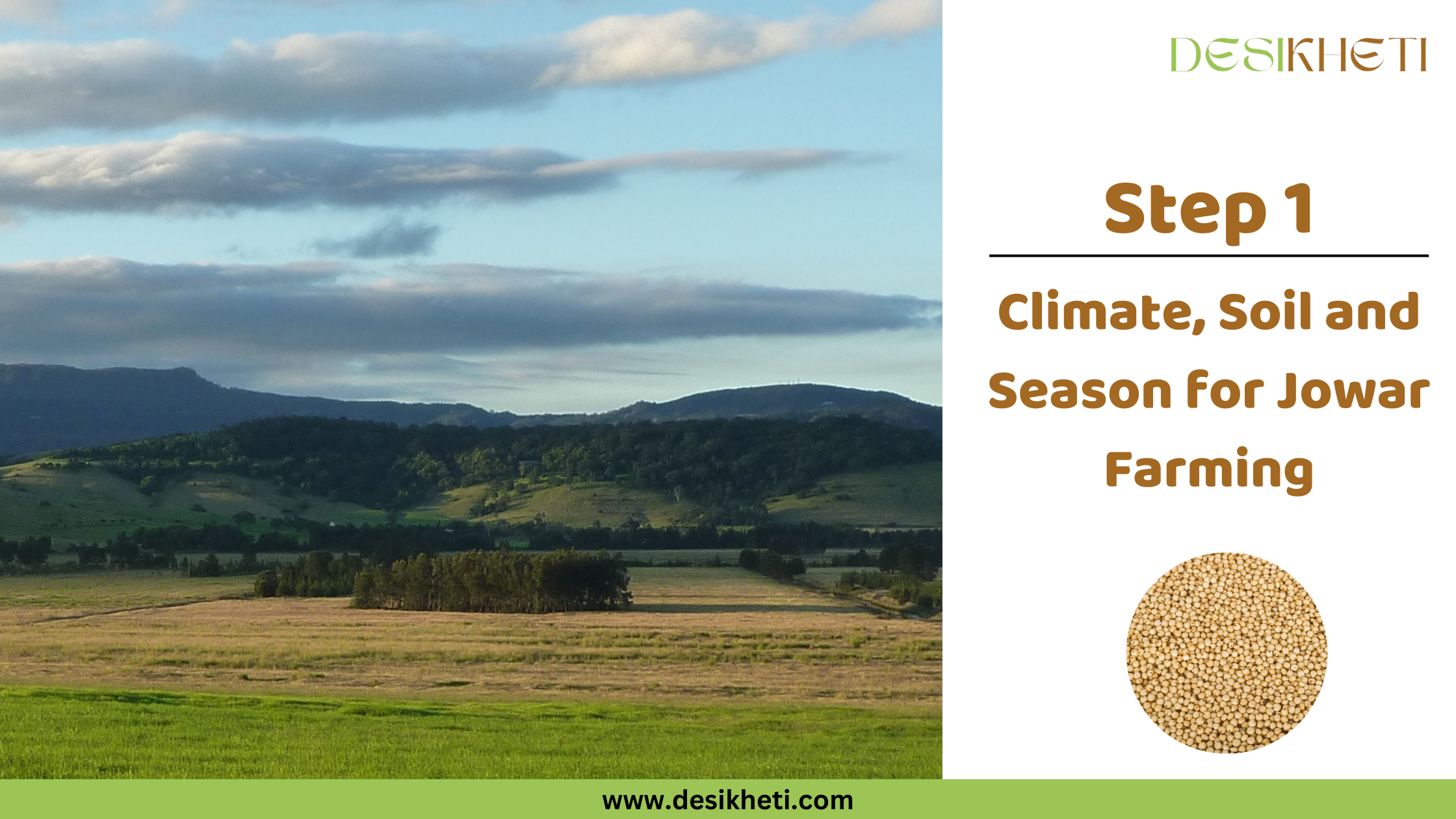
Climate for Jowar Cultivation
Jowar is a hardy crop and can withstand a variety of climatic conditions. It is primarily a tropical, warm-weather crop that can grow in a wide range of temperatures, from 15°C to 40°C. The crop is grown in plains, arid, and even humid regions. Sorghum is a short-day plant, and flowering and grain formation begin when the day length shortens during winter.
Soil for Jowar Cultivation
Sorghum can be grown in a wide variety of soils. Jowar grows best in heavy black soils and clay loams, which retain moisture and provide essential nutrients. It can also be cultivated in red soil. Jowar does not grow well in gravelly or waterlogged conditions. For optimal growth, the soil should have a neutral pH of around 7.0.
Season for Jowar Cultivation
Jowar can be grown in all three seasons: Kharif, Rabi, and summer. Kharif sowing is done in the months of June and July, after the onset of the southwest monsoon. During this season, jowar is mostly grown on light soils. In the Rabi season, jowar is sown mainly as a rainfed crop in October, after the cessation of the southwest monsoon. In summer, jowar is typically grown as an irrigated crop, with the suitable sowing period being from the second fortnight of January to the first week of February.
Step 2: Selecting the Right Jowar Variety
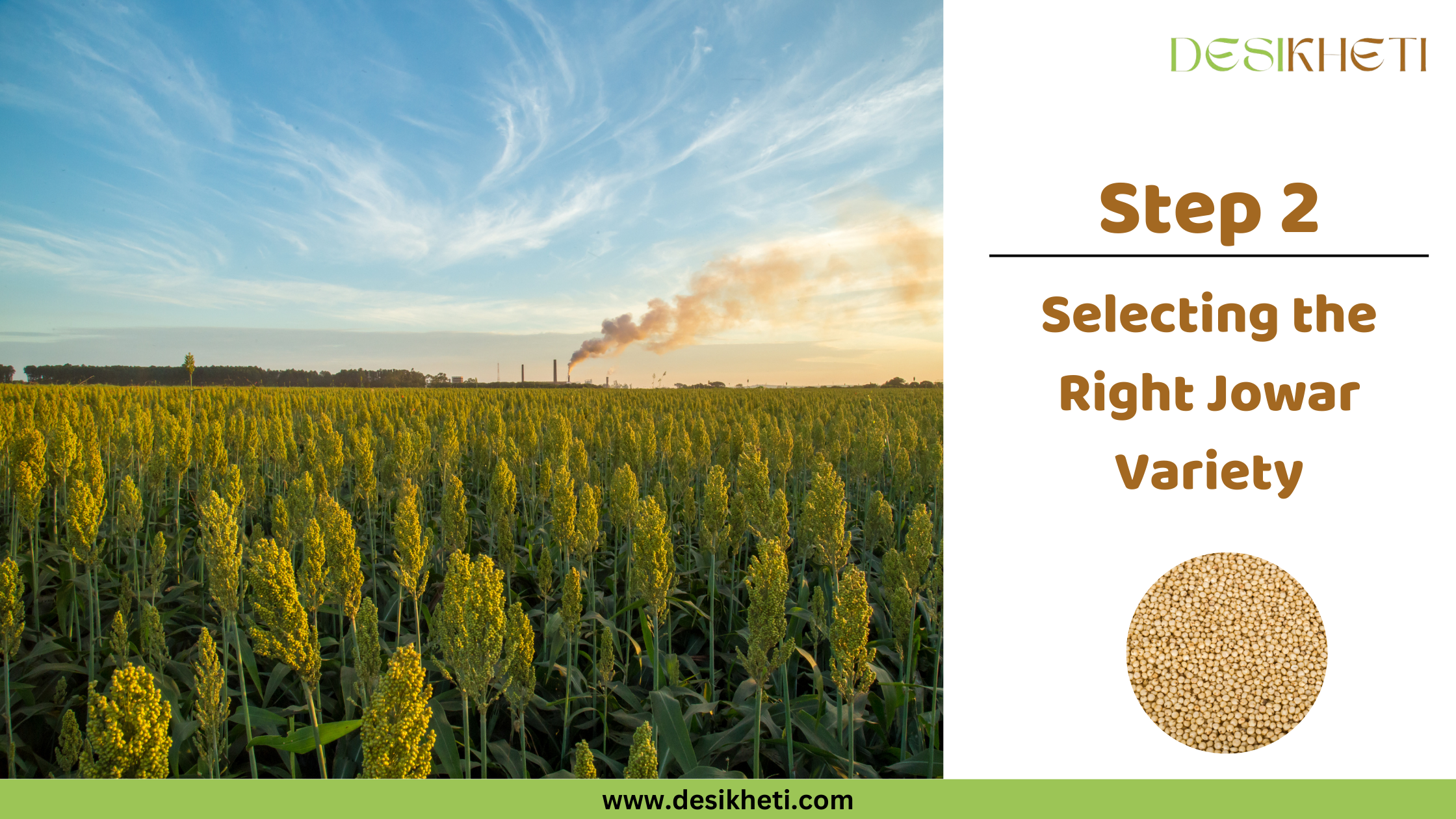
Various factors, such as region, climate, and season, need to be considered when selecting a variety. For your convenience, a few sorghum varieties are listed below.
Step 3: Procuring Quality Jowar Seeds
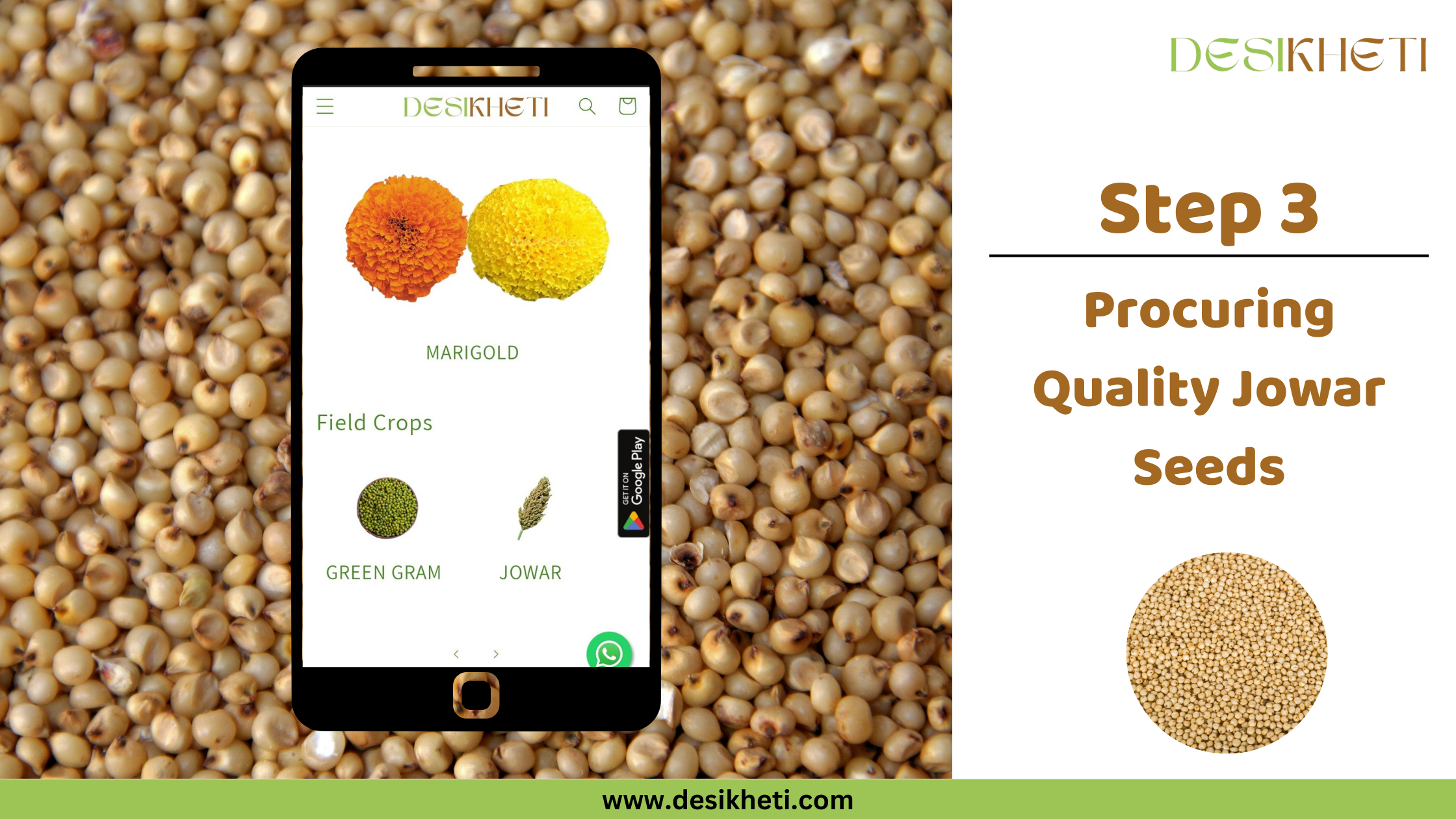
For successful jowar farming, selecting high-quality seeds is essential. Even with the best cultivation practices, poor-quality seeds can lead to low yields and weak plant health. Looking for the best jowar seeds? DesiKheti offers a wide range of premium jowar seeds tailored to your farming needs. Browse our collection of jowar seeds, place your order online, and have it delivered right to your doorstep.
Step 4: Land Preparation for Sowing Jowar Seeds
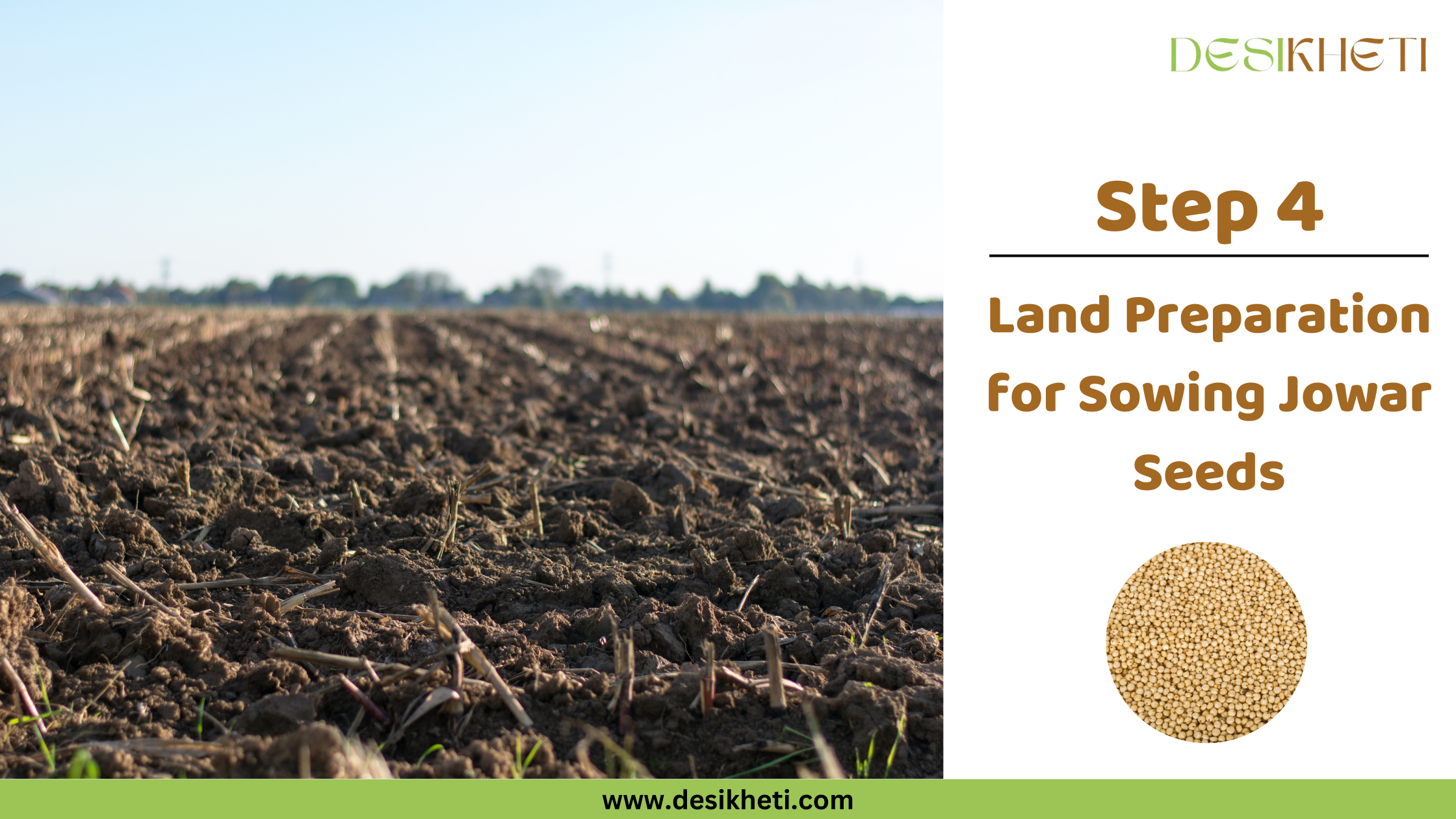
Proper land preparation is crucial for jowar cultivation. The land is thoroughly ploughed, followed by harrowing. Apply 12 to 15 tonnes of FYM per hectare during the final ploughing.

Step 5: Sowing Jowar Seeds

Seed Rate: The average seed rate is around 3 to 6 kg of jowar seeds per acre of land. However, this seed rate can vary widely based on the method of sowing, spacing, etc.
Seed Treatment: Jowar seeds sold by private companies are usually pre-treated with chemicals. However, if the seeds are not pre-treated, treat them with Thiram or carbendazim at 2g per kg of seed.
Sorghum is sown using various methods in different parts of the country. These methods include:
- Broadcasting: This method is not widely used by farmers because it requires a higher seed rate and results in uneven seed distribution. The seed rate varies from 12-18 kg/ha.
- Drilling: This method is carried out using locally prepared seed drills or a gorru, and the seeds are covered by harrowing. The seed rate is 8-12 kg/ha. A spacing of 45×15-20 cm is followed, and seeds are sown at a depth of 3-4 cm, which is common in dry soils.
- Dibbling: The seed requirement for dibbling is 6 kg/ha. It is recommended when labor is not a constraint. Spacing is generally 45×15 cm. Seeds are dropped in furrows directly or through a bamboo tube attached to the plough (akkadi). The depth of sowing is around 2.5 to 5 cm. Two to three seedlings are dibbled per hill, and thinning is done 15 to 20 days after sowing, leaving one seedling per hill.
- Transplanting: In areas with sufficient rainfall, jowar seedlings are transplanted. When the soil becomes sufficiently moist, seedlings obtained from a nursery (after topping the leaves) are dropped into the plough furrow. As an irrigated crop, the field beds are irrigated, and seedlings are planted. A light irrigation before or soon after planting helps with better establishment. The transplanting method is mostly used for hybrid sorghum seed production.
- Ratooning: Ratooning refers to the cultivation of an additional crop from the re-growth of stubbles of the previous main crop after its harvest, thereby avoiding reseeding or replanting. Hybrids of sorghum can be ratooned. Ratooning is done only under irrigated conditions.
Step 6: Care After Sowing Jowar Seeds

Water Management:
Jowar is primarily grown as a rainfed crop. Although it is drought-resistant, jowar responds well to irrigation. The critical stages for water requirement include germination (at the time of sowing), the knee-high stage (30–35 days after sowing), the flag leaf stage (50–55 days after sowing), flowering (70–75 days after sowing), and grain formation (100–105 days after sowing).
On average, about 6–9 irrigations, each with a depth of 5–6 cm, are necessary depending on the climate. Watering every 7–10 days in light soils and every 15–20 days in heavy soils helps maintain soil moisture. The total water requirement is about 500–600 mm.
Weed Management:
Intercultivation can be done to manage weeds effectively in a rainfed crop. It can be started when the crop is about 15–20 days old and repeated at 10-day intervals.
In an irrigated crop, hand weeding can be done within 20 days after sowing jowar seeds. Light ploughing can also be done later. One or two intercultivations in sorghum can provide adequately effective weed control.
Step 7: Harvesting Jowar
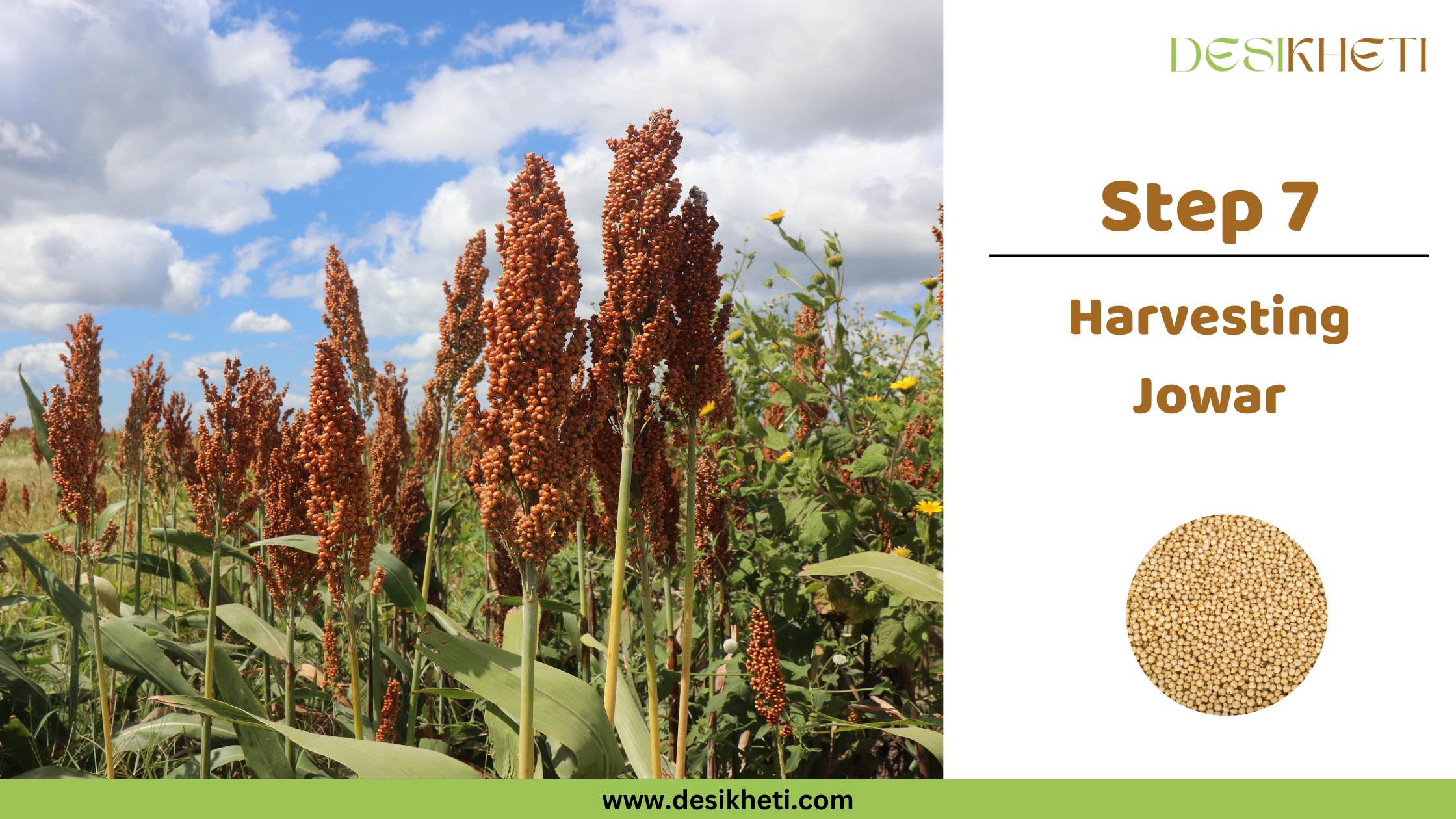
The crop needs to be harvested when the grain is ripe and hard. When the grains become hard and contain less than 25% moisture, they are considered fully ripe for harvesting. Generally, the irrigated crop matures later than the dry crop. The plants are pulled out with the roots and cut at the base with sickles. The harvested plants are allowed to dry in the field for 3-4 days, and then the ears are removed.
Sorghum grown for fodder purposes should be harvested either up to or at 50% flowering. Younger jowar plants contain high levels of hydrocyanic acid (HCN), which is poisonous to animals. Additionally, there is a sharp decline in the protein content and digestibility of nutrients beyond the flowering stage. For multi-cut varieties, the first cutting is done 2 months after sowing, with subsequent cuts at 30-40 day intervals after the first cut.

Common FAQs Related to Jowar Seed Sowing
Q. What climate is best for growing Jowar?
A. Jowar can be grown in a variety of climatic conditions. It grows best in a warm tropical climate and is a drought-resistant crop that can thrive in areas with temperatures ranging from 15°C to 40°C. It is well-suited for arid and semi-arid regions.
Q. Which soil is best for growing Jowar?
A. Jowar grows well in heavy black soils and clay loams, which retain moisture and provide essential nutrients. It can also be cultivated in red soils but does not perform well in gravelly or waterlogged conditions.
Q. What is the rate of Jowar seeds per acre?
A. The average seed rate for jowar is 3 to 6 kg per acre, although this may vary depending on the sowing method, spacing, and soil conditions.
Q. When should Jowar be harvested?
A. Jowar needs to be harvested when the grains become hard and the moisture content is less than 25%.
Q. How deep should Jowar seeds be sown?
A. Jowar seeds need to be sown at a depth of 2.5 to 5 cm, depending on the soil type and sowing method.
Q. What is the scientific name of Jowar?
A. The scientific name of Jowar is Sorghum bicolor.

Join DesiKheti Whatsapp Channel for regular updates, farming tips, and information on agriculture.
